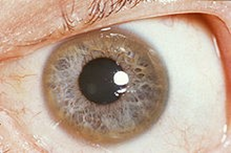接Part.3
Copper and Zinc Toxicity/铜和锌的毒性
Health risks from excessive zinc/过量锌带来的健康风险
Although zinc is an essential requirement for good health, excess zinc can be harmful [9]. Excessive absorption of zinc suppresses copper and iron absorption [32]. Acute adverse effects of high zinc intake include nausea, vomiting, loss of appetite, abdominal cramps, diarrhea, and headaches [9]. One case report cited severe nausea and vomiting within 30 minutes of ingesting 4 g of zinc gluconate [139]. Intakes of 150–450 mg of zinc per day have been associated with such chronic effects as low copper status, altered iron function, reduced immune function, and reduced levels of high-density lipoproteins. Reductions in the superoxide dismutase levels, a marker of copper status, have been reported with even moderately high zinc intakes of approximately 60 mg/day for up to 10 weeks[140,141].
尽管锌是身体健康的必要条件,但过量的锌可能是有害的 [9]。过量吸收锌会抑制铜和铁的吸收 [32]。高锌摄入的急性副作用包括恶心、呕吐、食欲不振、腹部绞痛、腹泻和头痛 [9]。一份病例报告称摄入4g葡萄糖酸锌后30分钟内出现严重恶心和呕吐 [139]。每天摄入150-450毫克锌与低铜状态、铁功能改变、免疫功能降低和高密度脂蛋白水平降低等慢性影响有关。据报道,即使每天摄入约60毫克的适度高锌,持续长达10 周,超氧化物歧化酶水平(铜状态的标志物)也会降低 [140,141]。
Zn poisoning/锌中毒
In 1982, pennies were made primarily of zinc covered with copper. With the new zinc pennies, there was the potential for zinc toxicosis, which can be fatal. One reported case of ingestion of 425 pennies (over 1kg of zinc) resulted in death due to gastrointestinal bacterial and fungal sepsis, while another patient, who ingested 12 grams of zinc, showed lethargy and ataxia [142,143].
1982年,便士主要由铜覆盖的锌制成。有了新的锌便士,就有可能导致锌中毒,这可能是致命的。一个案例报告,摄入425便士(超过1公斤锌)因胃肠道细菌和真菌败血症导致死亡,而另一名摄入12克锌的患者表现出嗜睡和共济失调 [142,143]。
Copper toxicity/铜毒性
Excessive copper intake can cause nausea, vomiting, abdominal pain and cramps, headache, dizziness, weakness, diarrhea, and a metallic taste in the mouth (assosiated with water containing copper concentrations greater than 6mg/L) [5]. Chronic copper toxicity does not normally occur in humans because of transport systems that regulate absorption and excretion [144]. Since excess copper is excreted through bile, copper toxicity is most likely to occur in individuals with liver disease or other medical conditions in which the excretion of bile is compromised [5]. Whether copper is carcinogenic has not been determined yet [145-147]. Postpartum depression has also been linked to high levels of copper. This is because copper concentrations increase throughout pregnancy to approximately twice normal values, and it may take up to three months after delivery for copper concentrations to normalize [148]. There are scientific articles that indicate a link between long-term exposure to high concentrations of copper and a decline in intelligence with young adolescents [149]. Whether this should be of concern is a topic for further investigation.
过量摄入铜会导致恶心、呕吐、腹痛和痉挛、头痛、头晕、虚弱、腹泻和口腔金属味(与铜浓度大于6毫克/升的水有关)[5]。由于调节吸收和排泄的运输系统,人类通常不会发生慢性铜毒性 [144]。由于过量的铜通过胆汁排泄,因此铜中毒最有可能发生在患有肝病或胆汁排泄受到损害的其他疾病的个体中 [5]。铜是否致癌尚未尚未确定 [145-147]。产后抑郁症也与高水平的铜有关。这是因为铜浓度在整个怀孕期间会增加到大约正常值的两倍,并且在分娩后可能需要长达三个月的时间才能使铜浓度恢复正常 [148]。有科学文章表明,长期暴露于高浓度铜与青少年智力下降之间存在联系 [149]。这是否应该引起关注是一个有待进一步研究的话题。
Cu poisoning/铜中毒
In recent years, nutritionists have been more concerned about copper toxicity than copper deficiency. One explanation for this was the increase in the amount of copper found in drinking water due to the switch in some areas from galvanized water pipes to copper water pipes. Cooking with copper cookware can also increase the copper content of foods. Industrial exposure to copper fumes, dusts or mists may result in metal fume fever with atrophic changes in nasal mucous membranes [5]. Intentionally high uptakes of copper may cause liver and kidney damage and even death. Gram quantities of various copper salts have been taken in suicide attempts and produced copper toxicity in humans, possibly due to redox cycling and the generation of reactive oxygen species that damage DNA [150]. Corresponding amounts of copper salts (30 mg/kg) are toxic in animals [151].
近年来,与缺铜相比,营养学家更关注铜的毒性。对此的一种解释是,由于某些地区从镀锌水管转向铜水管,导致饮用水中铜含量的增加。用铜炊具烹饪也可以增加食物的铜含量。工业接触铜烟、灰尘或雾气可能导致金属烟热,鼻粘膜出现萎缩性变化 [5]。故意大量摄入铜可能会导致肝肾损伤甚至死亡。克数的各种铜盐已被用于自杀企图,并在人体中产生铜毒性,这可能是由于氧化还原循环和产生破坏DNA的活性氧 [150]。相应量的铜盐(30mg/kg)对动物有毒 [151]。
Wilson's disease or hepatolenticular degeneration:Wilson’s disease is a rare, progressive, autosomal recessive disorder characterised by impaired transport and excessive accumulation of copper in the liver, brain, and other tissues [152]. The condition is due to mutations in the Wilson disease protein of ATP7B gene (located on chromosome 13q14.3) [68], by impaired copper incorporation to ceruloplasmin and biliary copper excretion. It is characterisied by a hepatic cirrhosis, neurological manifestations (dystonia, dysarthria, muscle weakness, vertigo), psychiatric manifestations, renal disease, and copper deposition in the cornea – Kayser-Fleischer ring (Figure 5) [53,54,152]. The treatment of Wilson’s disease involves avoidance of foods rich in copper and any supplements containing copper and drug treatment with chelating agents that remove the excess copper from the body (D-penicillamine, Zn acetate)[153].
Wilson's病或肝豆状核变性:Wilson's病是一种罕见的进行性常染色体隐性遗传疾病,其特征是肝脏、大脑和其他组织中铜的运输受损和过度积累 [152]。这种情况是由于 ATP7B 基因的Wilson’s 病蛋白(位于染色体13q14.3)[68] 发生突变,铜与铜蓝蛋白的结合和胆汁铜排泄受损。它的特点是肝硬化、神经系统表现(肌张力障碍、构音障碍、肌肉无力、眩晕)、精神表现、肾脏疾病和角膜中的铜沉积-Kayser-Fleischer环(图 5)[53,54,152]。Wilson’s病的治疗包括避免食用富含铜的食物和任何含铜补充剂,以及使用螯合剂(D-青霉胺、醋酸锌)进行药物治疗,以去除体内多余的铜[153]。

图 5:Kayser-Fleischer环(后弹力环上的铜沉积膜和晶状体前后囊)
In the study of copper toxicosic in humans, lipid peroxidation and copper content were significantly increased (P < 0.05) in hepatic mitochondria from patients with Wilson’s disease. More modestincreases in lipid peroxidation were present in microsomes from patients with Wilson’s disease. Mitochondrial copper concentrations correlated strongly with the severity of mitochondrial lipid peroxidation. These data suggest that the hepatic mitochondria are an important target in hepatic copper toxicity and that oxidant damage to the liver may be involved in the pathogenesis of copper-induced injury. A significant decrease (37%) in the vitamin E/lipid ratio was also detectable in patients with Wilson’s disease showing high free serum copper (>10 micrograms/dl). The data support a role for free radicals in the pathogenesis of active liver diseases [154].Another study revealed that impaired conversion of 25(OH)D to 1,25(OH)2D occurs in copper intoxication and suggests that altered vitamin D metabolism is a potential factor in the development of bone and mineral abnormalities in Wilson’s disease [155].
在人体铜毒物研究中,Wilson’s病患者肝线粒体的脂质过氧化和铜含量显著增加(P<0.05)。Wilson's病患者的微粒体中存在脂质过氧化的适度增加。线粒体铜浓度与线粒体脂质过氧化的严重程度密切相关。这些数据表明,肝线粒体是肝铜毒性的重要靶点,肝脏的氧化损伤可能参与铜诱导损伤的发病机制。在显示高游离血清的Wilson's病患者中也可检测到维生素E/脂质比率显著下降(37%)铜(>10微克/分升)。数据支持自由基在活动性肝病发病机制中的作用 [154]。另一项研究表明,铜中毒时 25(OH)D 向1,25(OH)2D的转化受损,这表明维生素D代谢改变是Wilson’s病中骨骼和矿物质异常发展的潜在因素 [155]。
未完待续。。。

本公众号发布内容未经书面允许不得擅自转载及使用
公众号、报刊转载请联系授权:yannayin@fmchina.org
商务合作请联系:hugh@fmchina.org
欲了解更多:http://fmchina.org
相关信息请登录:http://edu.idhealth.cn/
- 还没有人评论,欢迎说说您的想法!
